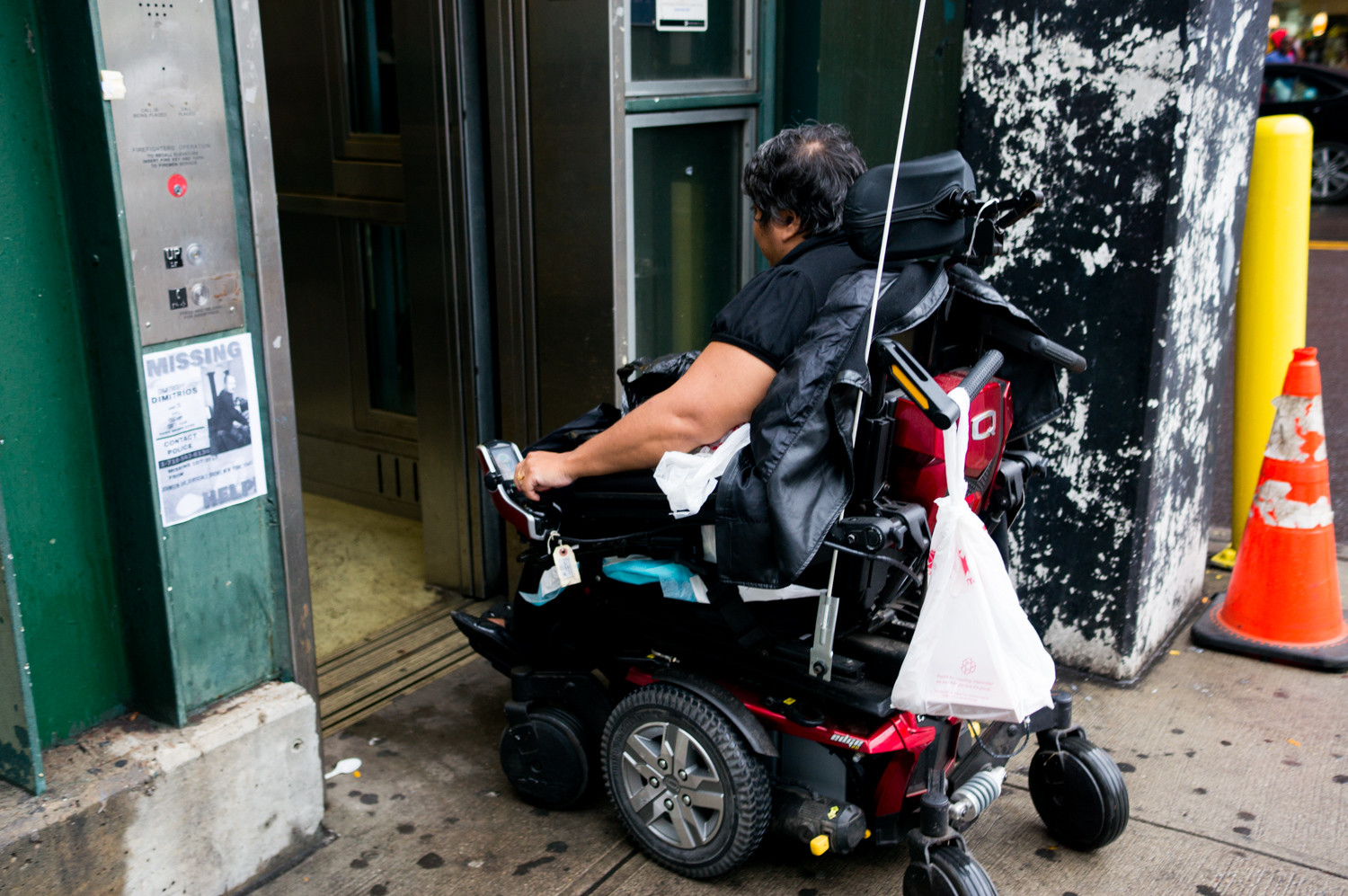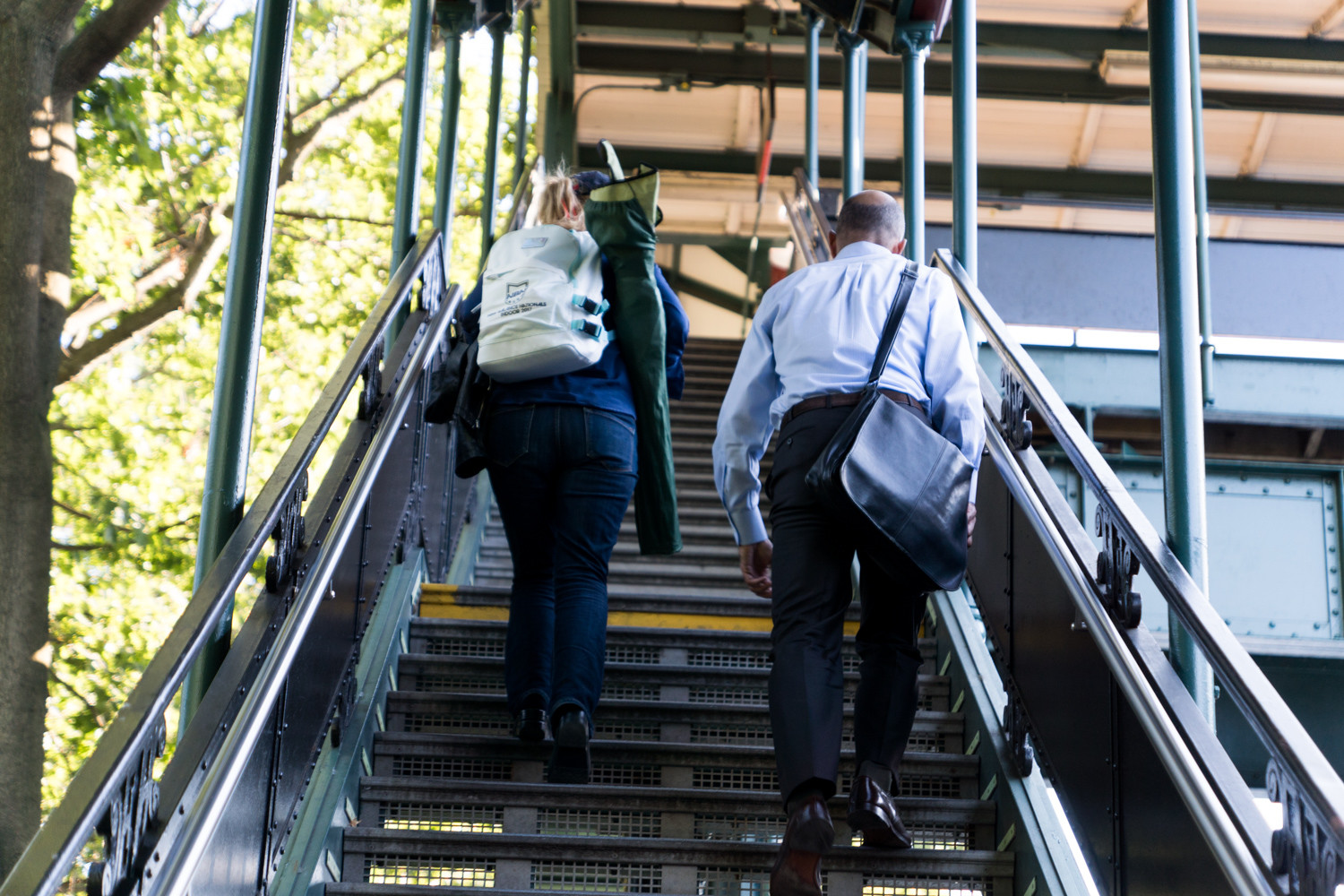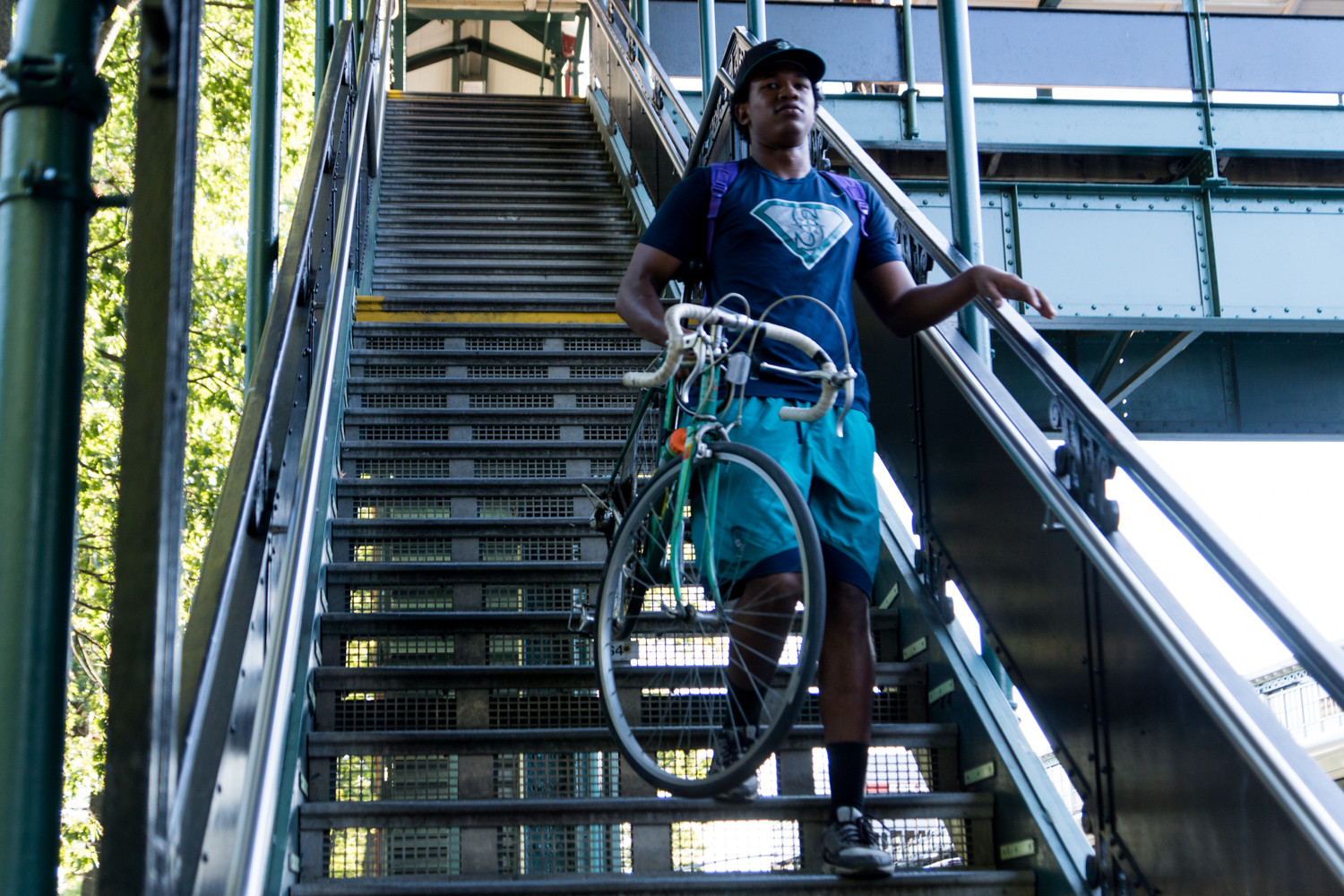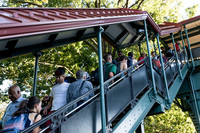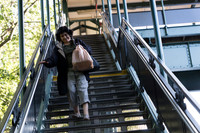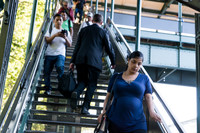Legal loophole trips up disabled subway riders
Dustin Jones can’t take trains the same way most other people can.
Nearly every day, Jones takes a 30-minute Bx9 bus journey from West Farms to West 231st Street and Broadway to catch the 1 train. He skips a closer connection with the 1 at West 225th Street not because he’s particular about train stations — he simply requires one with an elevator.
But when the elevator isn’t working, the wheelchair-bound Jones is forced to get creative. Like last month when he had to jump on the Bx7 bus to West 207th Street to catch the A train. Except that elevator wasn’t working either, forcing him to spend extra money to hail an express bus to East 125th Street, another bus to 96th Street to catch the Q, and finally finding his way to the 1 train at Times Square.
Jones made his appointment — two hours later.
Delays, detours and non-working elevators are a common occurrence for many commuters like Jones. And, at least for now, there’s no happy ending on the way, because a legal settlement the Metropolitan Transportation Authority made more than two decades ago requires elevators at just 100 “key stations.” That makes the elevator at West 231st fairly unique..
“Can you image trying to a be a person with disabilities?” Jones said. “It’s frustrating for an able-bodied person. Can you imagine how hard it is with all of the struggles we have?”
Elevators aren’t the only problem. Iffat Mahmud-Khan only has to travel a few blocks from her home to reach the West 231st Street lift, but many platforms were designed without thinking about her wheels sometimes getting stuck in the gap between the train and the platform itself.
That’s an easy fix, Mahmud-Khan said, simply by building trains or platforms “with a ‘lower lip’ or a ramp,” similar to what buses have now to accommodate wheelchair-bound riders.
“It seems like the MTA will go out of their way for creature comforts” like Wi-Fi, Jones said. But when it comes to accessibility — which he calls a civil right — “they seem to always … have no money to invest in things like elevator maintenance or brand new elevators.”
In 1994, MTA agreed to make 100 “key stations” accessible by 2020 as part of a settlement that exempted the agency from full compliance with the Americans with Disabilities Act as well as the state’s public buildings and transportation laws.
At the time, Moerdler said, West 242nd Street was a much quieter area.
By comparison, West 231st — which also is a connection hub for bus lines like the Bx1, Bx7 and Bx10 — was viewed as a busier traffic point over other northwest Bronx subway stops. Although population and commuter patterns have changed, MTA board member Charles Moerdler said, where elevators are available has not.
It’s not that MTA isn’t putting in new elevators — it’s only focused on the initial 100 over the last three remaining years of the settlement, Moerdler said. Even when the West 242nd station underwent renovations to repair its stairway banister and canopy, completed in 2016, Moerdler and elected officials pushed for an elevator as part of the work, only to be denied by the settlement.
MTA has just 11 stations remaining to upgrade over the 25-year plan, but according to Transit Center, there are no plans to install more.
Settlement or no settlement, the MTA could have done a lot more for wheeled commuters over the past 20 years, both Jones and Mahmud-Khan said
“Everyone should have access to everything that’s available,” Mahmud-Khan said.
"I know things are getting there, but how long do you have to wait for it?”

